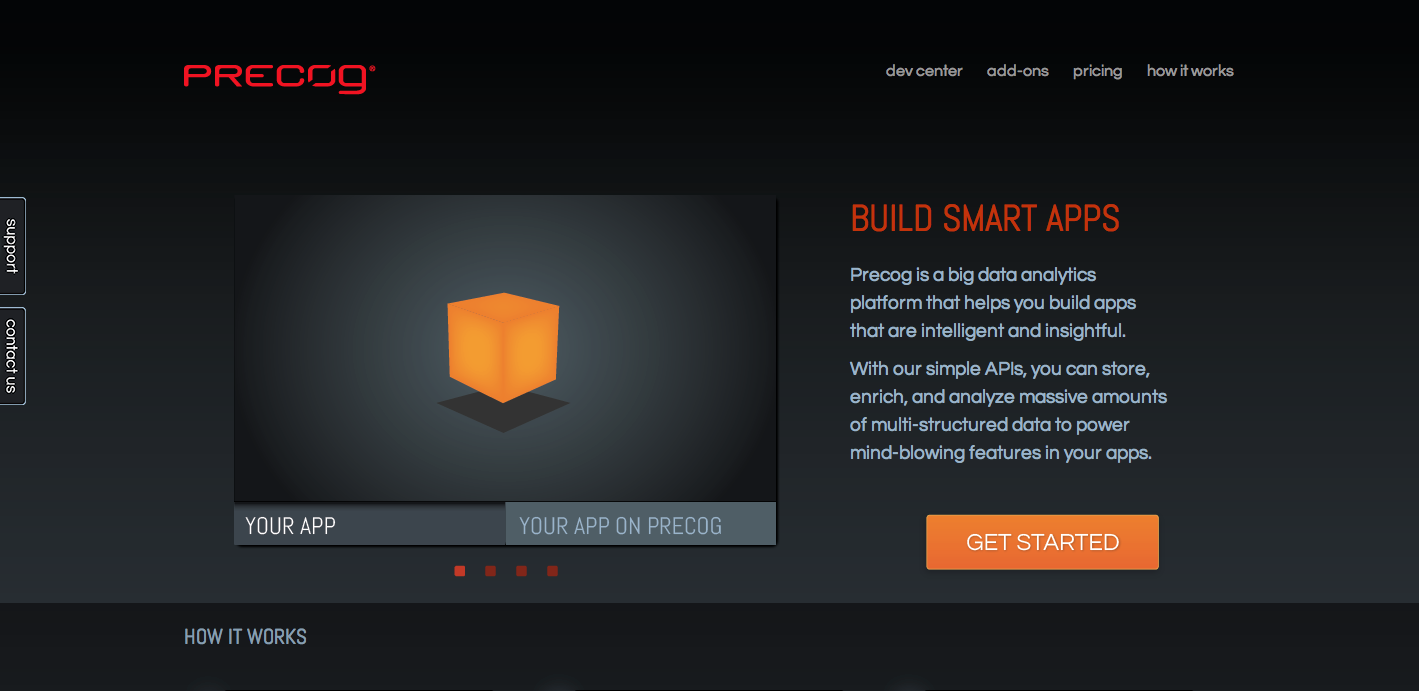Back in October, ReportGrid closed a $750K seed round with investors like Launch Capital, David Cohen, Walt Winshall, Doug Derwin, and Ed Roman — not long after it graduated from TechStars’ summer program in Boulder. The interest in ReportGrid was due to the fact that the company offers data analytics as a service (or DAaaS, if you prefer), providing companies with nifty scalable cloud database and visualization engine. In this way, it’s meant to be a turnkey, hosted alternative for developers to save them from having to build their own.
As Sarah wrote at the time, ReportGrid’s real value proposition is in the simplicity of its API, which, among other things, can plug into a SaaS vendor’s product to bake visualizations and analytics into the services they offer to customers. Essentially, ReportGrid is a simple, drop-in solution (targeted at developers) that allows them to avoid building analytics and visualizations services on top of MongoDB or Hadoop to offer reporting and customer intelligence. Building and maintaining those kind of big-data reporting solutions can suck the life out of companies, especially SMBs or those without significant IT resources.
While ReportGrid’s solution wipes away some serious friction for developers, it’s still a fairly simple solution — not to mention that companies like GoodData and LogiXML offer embeddable reporting solutions that help vendors get analytics into their products. That’s why, since its raise in October, the company has been focused on building the next phase of the company.
Tomorrow ReportGrid will announce the launch of Precog in alpha, which ReportGrid CEO John A. De Goes describes in equivocally alluring terms as “a cloud service for anticipating and manipulating the future.” No doubt that may pique the curiosity of science fiction fans and those dictators-to-be out there, but what does that mean in practice?
The CEO tells us that Precog is like a Heroku for all those (B2B or B2C) apps out there that consume huge quantities of data from a diverse set of services in order to provide users with insight and intelligence. The possible use cases here are much broader compared to ReportGrid, as thousands of today’s well-known apps suck in swaths of data on user activity, leveraging that data to offer better recommendations for their consumers on whatever it may be — music, shopping, movies. Take Fourquare, or Netflix, for example, both of which utilize their data on check-ins and movie likes and views to offer better recommendations on where to go or what to watch.
Amazon would be another great example, as every one of its pages is tailored (or personalized) based on what they know about you, your interests, activities, as well as on the buying habits of the collective user base. Of course, Amazon has thousands of senior R&D folks and data engineers working on these personalization features, so, with Precog, ReportGrid wants to give the same tools to SMBs, startups, and everyone else who may not have access to the same resources.
Whether they are created by developers big or small, every app out there can benefit from tracking clicks, activity, engagement, clustering, segmentation, etc. Precog gives teams access to all this from a simple control panel, adding or subtracting features by clicking a box. The other big piece of this is that, like Heroku, Precog offers an add-on marketplace, in which developers can select from a variety of data enrichments, like sentiment analysis, demographics by email, or contact normalization. ReportGrid visualizations will also be offered as a premium feature of Precog.
Thus, Precog enables users to store massive amounts of multi-structured data and perform sophisticated analytical, statistical, and predictive calculations across that data. As such, De Goes says that its marketplace will ultimately contain a suite of high-level, data-driven apps built by third-parties that enable businesses to directly benefit from its technology to take advantage of data analysis, predictive modeling, or, say, allow marketers to identify new potential leads.
If one takes the example of YouTube, and consumer-facing sites, Precog could be used to help keep users engaged with the site by showing them content that they are more likely to be interested in — thus generating more revenue through advertising. On the flip side, for B2B services, Precog can power reporting solutions that let them better understand and serve their users.
Of course, there are a number of point solutions similar in nature to Precog, like MongoDB and Vertica, all of which help solve problems in analytics and statistics. But these point solutions aren’t cloud offerings, they don’t have a marketplace with data enrichments, and only offer basic analytics. Precog is targeting an easier, full stack solution that works out of the box to solve complex problems in analytics and statistics.
Infochimps did recently announce that it was moving away from its data marketplace to build a platform for big-data apps, which will likely see the two companies become competitors — along with Continuuity, which is still in stealth.
The companies entering the space are doing just that — entering — and are still in the early phases. “There’s really no big, established player in this space that’s trying to become the Twilio for data analytics,” the CEO said. With powerful, robust APIs, and a head start, Precog could become a big player in the space, giving app developers and businesses a rest from maintaining hardware, or going through an elaborate setup process.
ReportGrid plans to offer an open source distribution of Precog later this year, with a REST API identical to that of its hosted version. Precog will likely enter beta in March, with a full, public release slated for July. We’ve also heard that the technology behind Precog has led to significant interest from investors, so stay tuned for some potential funding news.
Check out ReportGrid at home here and Precog here.
Excerpt image from ZZE.ST

